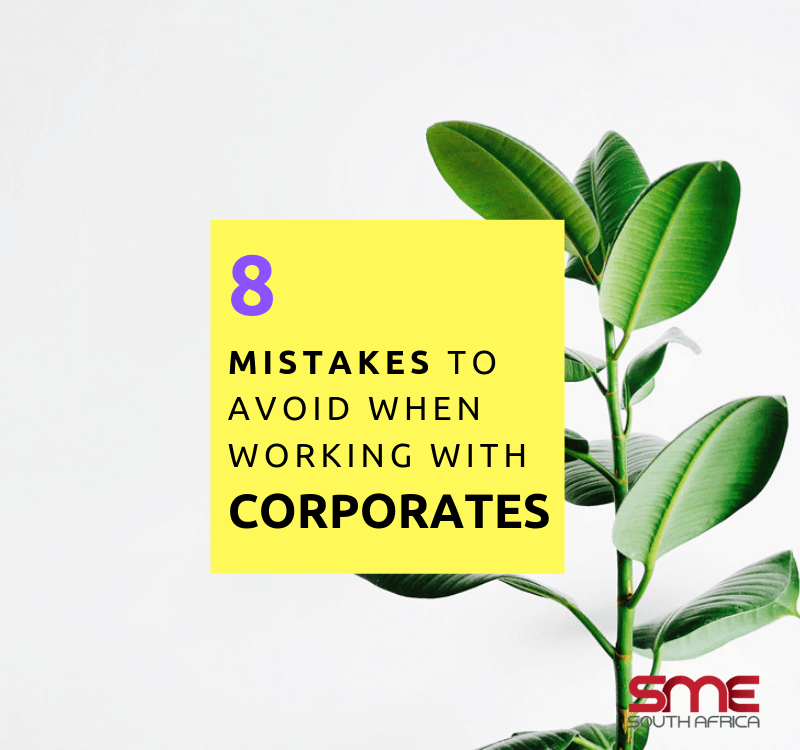
A good Enterprise Supplier Development (ESD) Programme has the potential to be life changing for a small business by helping to expand its market access. ESD which forms part of B-BBEE Code of Good Practice, involves the upliftment of a small company in which a larger company may like to procure with in future.
However, in practice ESD is not without its challenges. The main cause for concern with ESD programmes is mismatched expectation in terms of what the corporate and SMEs are getting versus what they think they should be getting, including investment in skills development, funding, as well as procurement.
Vivian Reddy, head of the access business unit for Edgegrowth, an ESD specialist firm, shares the top 8 mistakes that she sees SMEs make with regards to ESD programmes, PLUS see the solutions for each one.
1. They enter a programme that is not suited to their life cycle stage
The solution: Know Thyself
“Small businesses should be aware of the growth stage of the business and whether they are ready to become an ESD partner. Incubator stage businesses are still in the idea stage and may not have produced revenue yet. The accelerator stage businesses have put their business ideas into practice and have been able to produce a fair amount of revenue. However, these companies require an extra resource that can catapult them to the next level of their business.” – Kealeboga Mokolobate is Enterprise and Supplier Development (ESD) expert.
2. They don’t check who the corporate has outsourced the program to – the service provider running the programme and their track record
The solution: Research your ESD Programmes
Most ESD programmes happily share their case studies, as well as their selection criteria.
See: Pick n Pay, SAB, Sun International, Protea Hotels by Marriot, Tsogo Sun. Full list of South African ESD programmes here.
3. The corporate doesn’t buy the product or service the SME produces
The solution: Know whose lives you are changing
“The best way to sustainably stay in a good supply chain is to have a good fit with the company supporting you. In order to establish this correct fit you need to understand where your product/service is most suitable and whose lives it is affecting. In order to find this out, it’s important that you avoid making assumptions and ask the current customers you have. Perhaps there is something small you could add to your offering to move you into a new market.” – Kealeboga Mokolobate is Enterprise and Supplier Development (ESD) expert. Read more
4. They enter multiple programmes and don’t have the capacity to implement programme learnings
At the end of the day, an enterprise should leave an ESD programme when it’s empowered to stand and survive in the business world. We know that we are losing the challenge when time and time again we see developing enterprises moving from one ESD programme to another with nothing to show for it. Monitoring and the evaluation of these enterprises are therefore also essential to tracking growth and success – but also to identify areas of weakness or need for further intervention.” – Khanya Okumu, Enterprise and Supplier Development Specialist at Old Mutual.
5. They don’t extract the most value – a programme requires time commitment, and they don’t implement as they learn
The solution: Learn how to implement new ideas
1. Choose about three ideas that you want to try.
2. Then decide when, how, by whom and with what measured outcomes this should be done. This may mean that you need to figure out how you are going to measure results.
3. Set a target for results and timing – how much and by when. If you, personally, are the implementer, add the instructions to your task list. Allocate resources, including time, and do not accept half measures. Read more
6. Entrepreneur attend the programme’s events themselves – they should use these to develop their people as well
The solution: Invest in your team
“Offering skills development initiatives could be an additional avenue for creating a desirable workplace for both current and future staff. In fact, findings from the Kelly Global Workforce Index (KGWI) reveals that “employers who invest in training and staff development not only reap productivity benefits but also have a better chance of retaining employees.” – Kay Vittee is the CEO of Quest Staffing Solutions (Pty) Ltd, one of South Africa’s leading staffing solutions provider.
7. They don’t take advantage of the fact that they now have bigger access to procurement people
The solution: Learn from Breva founder Gladys Mawoneke
Despite being a relative newcomer in the highly competitive drinks market she managed to do just that, and got Breva onto the shelves of some of the biggest retailers in the country.
Breva beverages can be found at Woolworths, Pick n Pay, Shoprite, and select Checkers Liquor and Spar Western Cape outlets. The brand has also made inroads in hotels. It is available in select Tsogo Sun four and five star hotels.
Mawoneke shares the biggest lessons she has learnt from selling to big retailers and what other SMEs can learn about building relationships, getting the right retailer product fit and mastering their systems and processes. Read more
8. They are very critical of sponsors, this does not endear them to these corporates
The solution: Take care of your business relationships
The quote that “all things being equal, people will do business with, and refer business to, those people they know, like, and trust,” by the American motivational speaker, consultant and author, Bob Burg, is as true today as it has ever been.
Jannie Rossouw, head: Sanlam Business Market writes, “It is my observation that the golden thread, which distinguishes lasting business associations from the rest, is the authenticity of the relationship; in other words, how genuine the business association is.” Read more.






